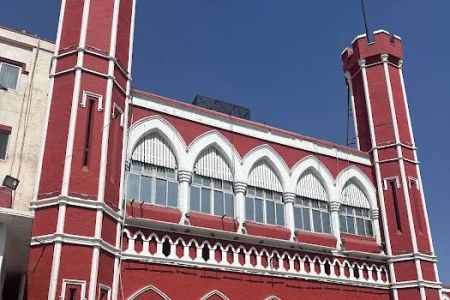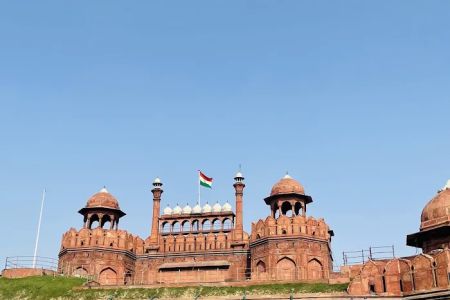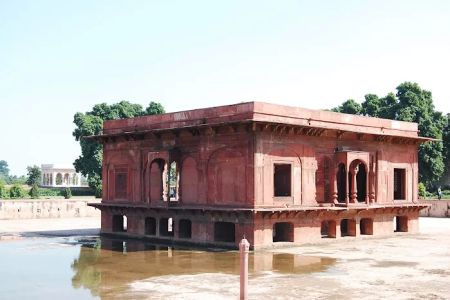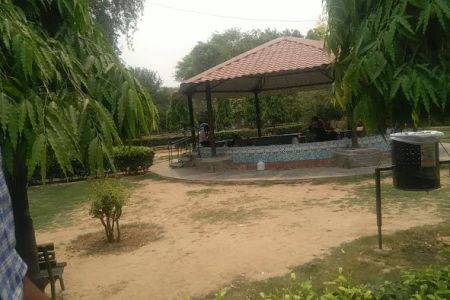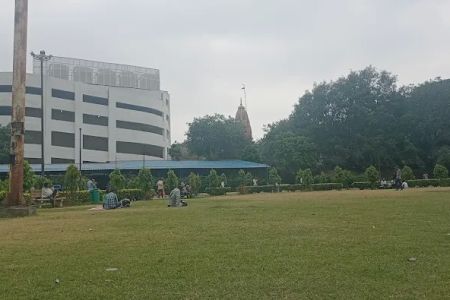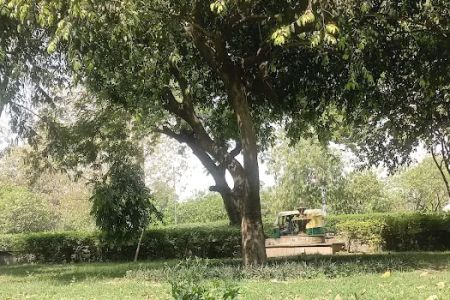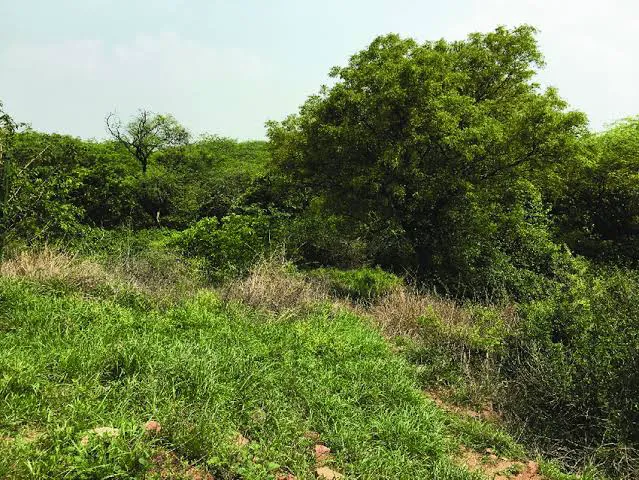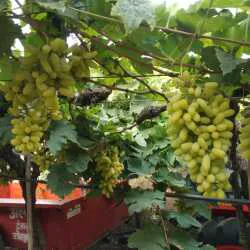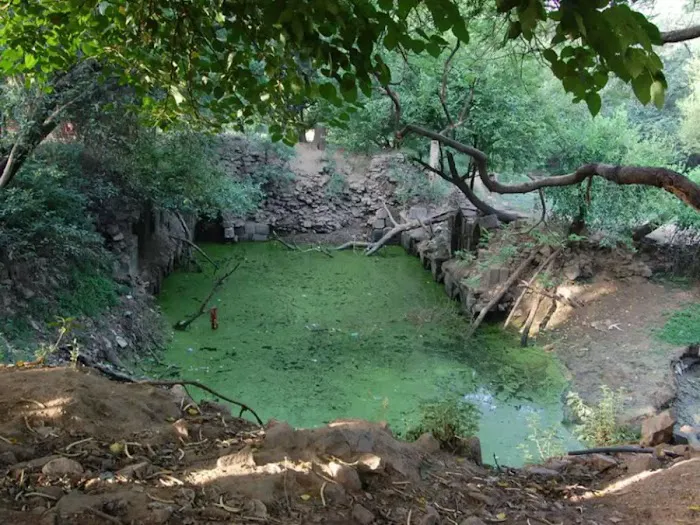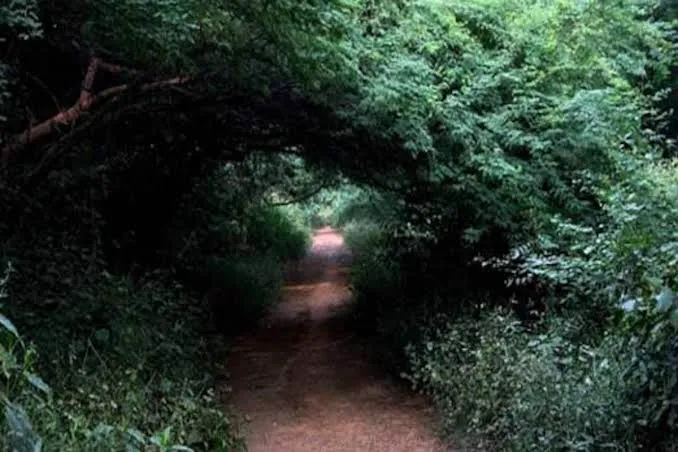In the historic heart of Old Delhi, within the majestic confines of the UNESCO World Heritage Site, the Red Fort (Lal Qila), lies a captivating and often overlooked gem: Angoori Bagh. While the Red Fort itself is a monumental symbol of Mughal grandeur and India's rich past, Angoori Bagh, literally translating to "Grape Garden," offers a tranquil counterpoint to the fort's imposing architecture and bustling courtyards. For Delhiites, particularly those with a keen interest in history, architecture, or simply a desire for a peaceful escape, this historical garden provides a unique window into the leisurely pursuits of Mughal royalty.
Angoori Bagh's significance extends beyond its aesthetic appeal. It was an integral part of the royal zenana (women's quarters) within the Red Fort, designed for the private use and recreation of the royal ladies. This historical context imbues the garden with a special aura, allowing visitors to imagine the serene strolls and intimate gatherings that once took place here. Although it may not boast the vibrant grapevines that once gave it its name – sources mention it was originally renowned for its "lush vineyards of the choicest and juiciest grapes" – its meticulously planned layout and enduring tranquility continue to draw those seeking a moment of peace amidst the grandeur of the fort.
For locals, visiting Angoori Bagh within the Red Fort is more than just a tourist activity; it's a connection to their city's deep roots and a chance to experience history firsthand. It offers a blend of natural beauty and architectural brilliance, providing a space for quiet contemplation, photography, and simply unwinding. In a city as dynamic and ever-evolving as Delhi, preserving and appreciating such historical green spaces is crucial, offering a vital link to the past while providing a serene environment for the present. The "many shrines, fountains, and a large garden" associated with the general information about such historical parks suggest a rich and varied experience for visitors.
Location and Accessibility
Angoori Bagh is uniquely situated within one of Delhi's most iconic and historically significant landmarks: the Red Fort (Lal Qila). Its address is: M65Q+73F, Lal Qila, Chandni Chowk, Delhi, 110006, India. This central location in Old Delhi makes it highly accessible for residents from various parts of the city, especially those interested in exploring Delhi's rich Mughal heritage.
Being part of the Red Fort complex, Angoori Bagh benefits from the excellent connectivity enjoyed by this major historical site:
- Metro Connectivity: The closest and most convenient Delhi Metro station is Lal Qila Metro Station on the Violet Line, which is just a short walk from the Red Fort's entrance. Chandni Chowk Metro Station on the Yellow Line is also relatively close and provides a great entry point into the vibrant Chandni Chowk market before reaching the fort. This makes metro travel a highly efficient way to reach the site.
- Bus Connectivity: Numerous Delhi Transport Corporation (DTC) bus routes terminate at or pass by the Red Fort and Chandni Chowk. There are several bus stops in the immediate vicinity of the fort, offering extensive bus connectivity from all corners of Delhi.
- Auto-rickshaws and Cycle-rickshaws: Given its location in Old Delhi, auto-rickshaws and cycle-rickshaws are readily available and can drop visitors directly at the fort's gates. Cycle-rickshaws, in particular, offer a charming and traditional way to navigate the narrow lanes of Chandni Chowk before reaching the fort.
- App-based Cabs: Services like Ola and Uber operate widely in Delhi and provide convenient drop-offs near the Red Fort.
- Proximity to Old Delhi's Attractions: Angoori Bagh's location within the Red Fort places it in close proximity to other major attractions of Old Delhi, such as Jama Masjid, Chandni Chowk market, and various historical Havelis, making it easy for visitors to combine their exploration of the garden with other cultural experiences.
- Entry Ticket: It's important to note that access to Angoori Bagh is gained by purchasing the entry ticket for the Red Fort itself. As of public information, the entry fee for Indian tourists is typically around INR 50, while for foreign tourists, it is around INR 650. Children below 15 are often free.
While parking in the immediate vicinity of the Red Fort can be challenging due to high footfall and security, designated parking areas might be available further away, but public transport is generally recommended for convenience.
Services Offered
Angoori Bagh, as a historical garden situated within the Red Fort complex in Delhi, does not offer commercial "services" in the conventional sense, such as event hosting or paid activities. Instead, its "services" are inherent to its role as a preserved heritage site and a public space designed for historical appreciation, relaxation, and cultural immersion. These include:
- Historical and Cultural Education: The garden offers visitors a tangible connection to Mughal history, providing insights into the architectural styles, landscaping preferences, and daily life of the imperial zenana. Information boards (where available) contribute to this educational experience.
- Serene Green Space: It provides a meticulously maintained "quadrilateral garden" or "charbagh-style garden" with "lush landscape," offering a peaceful retreat from the urban clamor. This allows visitors to enjoy nature and find tranquility within the fort's premises.
- Architectural Appreciation: Angoori Bagh is surrounded by "exquisite Mughal-era architecture, including marble pavilions, fountains, and beautifully landscaped gardens." It serves as a living exhibition of Mughal horticultural and architectural prowess.
- Photography Opportunities: The beautiful setting of the garden, with its symmetrical layout, historical structures, and serene ambiance, offers ample opportunities for photography, allowing visitors to capture memorable moments and artistic shots.
- Rest and Relaxation Areas: While not explicitly stated for all sections, historical gardens usually include benches or shaded areas where visitors can sit, rest, and soak in the historical atmosphere.
- Contribution to Local Ecosystem: As a green space, the garden contributes to the local microclimate, improving air quality and providing a small ecological habitat within the dense urban fabric of Old Delhi.
- Accessibility (Part of Red Fort): As part of the Red Fort, it benefits from the general accessibility provisions for the fort, including pathways suitable for walking and, where feasible, consideration for visitors with mobility challenges.
It's important for visitors to remember that these are non-commercial services related to public access to a heritage site. Any additional services like guides or food stalls would be available as part of the larger Red Fort complex, not specifically Angoori Bagh.
Features / Highlights
Angoori Bagh, nestled within Delhi's iconic Red Fort, is rich in features and highlights that make it a compelling destination for anyone interested in Mughal history, architecture, and serene green spaces. These attributes underscore its significance as a historical garden and a place of beauty.
- Mughal Charbagh Design: A primary highlight is its design as a classic "charbagh," or quadrilateral garden, a hallmark of Mughal landscape architecture. This symmetrical layout, often divided by water channels and pathways, symbolizes paradise on earth and reflects the meticulous planning of the era.
- Historical Significance: Built by Emperor Shah Jahan in 1637, Angoori Bagh was a private garden for the royal ladies of the zenana. This historical context allows visitors to step back in time and imagine the leisurely activities of empresses and princesses, offering a unique glimpse into royal life.
- Original Grape Garden (Historical Context): While the grapevines that gave it its name ("Angoori" meaning "grape") are no longer prominent, the historical fact that it was once a "garden of grapes" with "lush vineyards" adds to its charm and narrative.
- Architectural Surroundings: The garden is surrounded by exquisite Mughal architecture, including marble pavilions, red sandstone arcades, and parts of the Khas Mahal. These structures originally featured "fine white marble, which was initially painted and gilded in gold and was adorned with exquisite beautiful paintings," providing a stunning backdrop to the greenery.
- Water Features: Historical accounts mention "fountains" and "hammams (bath houses)" within or adjacent to the garden. These water elements were not only aesthetically pleasing but also served practical purposes, like cooling the area during hot months, showcasing Mughal engineering.
- Peaceful Oasis: Despite its location within a popular monument, Angoori Bagh often offers a relatively "serene escape" and a "peaceful oasis" from the bustling tourist crowds in other parts of the Red Fort. This tranquility makes it ideal for quiet reflection and appreciating the historical ambiance.
- Aesthetic Beauty: Even without its original grapevines, the garden's symmetrical beds, mature trees, and open spaces offer considerable aesthetic appeal, making it a favorite spot for photography and leisurely strolls.
Promotions or Special Offers
As a historical garden located within the Red Fort complex in Delhi, Angoori Bagh does not engage in commercial "promotions" or "special offers" in the same way a retail business or a private attraction might. It is a part of a protected monument managed by the Archaeological Survey of India (ASI) and operates under its guidelines.
Therefore, the "promotions" or "offers" associated with Angoori Bagh are inherent to its public access as a heritage site and are generally stable, not dynamic discounts. These include:
- Included with Red Fort Entry: The most significant "offer" is that access to Angoori Bagh is included with the standard entry ticket to the Red Fort. There is no separate charge for visiting this specific garden once you have entered the fort premises.
- Standardized Entry Fees: The pricing for entry to the Red Fort (and thus Angoori Bagh) is standardized by the ASI. As of public information, this is typically around INR 50 for Indian citizens and INR 650 for foreign tourists. There may be discounts for certain categories like students or children below a certain age (often free below 15 years). These rates are consistent and not "promotional" in the short-term sense.
- Free Access to Heritage and Greenery: The park continuously "offers" the invaluable opportunity to freely explore a piece of Mughal history and enjoy a beautifully maintained green space in the heart of Old Delhi. This cultural and natural benefit is a constant "promotion" of its value.
- Seasonal Accessibility: While not a "promotion," visiting during certain times of the year (e.g., cooler winter months) or during specific hours (e.g., early morning) can enhance the experience, offering a more pleasant atmosphere with fewer crowds. This can be considered a "best time" to avail the park's offerings.
Any "special events" or unique "promotions" related to Angoori Bagh would only occur as part of larger cultural festivals, heritage walks, or specific government-organized events within the Red Fort. Information for such events would be disseminated through official ASI channels, tourism websites, or local news, not directly by the garden itself. For the most accurate and up-to-date information on entry fees and timings, visitors should refer to the official Archaeological Survey of India website or the ticket counter at the Red Fort.
Contact Information
As Angoori Bagh is a historical garden located within the Red Fort (Lal Qila) complex in Delhi, there isn't a direct, dedicated contact number or email address specifically for the garden itself. Its management and all related inquiries fall under the purview of the Archaeological Survey of India (ASI), which is responsible for the maintenance and preservation of the Red Fort as a national monument.
Here is the relevant information and the suggested approach for contacting the authorities responsible for Angoori Bagh and the Red Fort:
- Address: M65Q+73F, Lal Qila, Chandni Chowk, Delhi, 110006, India
- Primary Managing Authority: The Archaeological Survey of India (ASI).
- Red Fort Ticket Counter/Information Desk: For immediate queries during a visit, the information desk or staff at the Red Fort's entry gates would be the most direct point of contact.
- Archaeological Survey of India (ASI) Contact:
- For broader inquiries, official information, or feedback regarding the Red Fort and its components like Angoori Bagh, visitors should refer to the official website of the Archaeological Survey of India. The ASI website typically lists contact details for their various circles and offices, including those overseeing monuments in Delhi.
- While a general ASI helpline might exist, it is best to search their official website (e.g., asi.nic.in) for the specific contact details of the Delhi Circle of ASI, which is responsible for the Red Fort.
- General Tourism Information: For general tourism-related queries about visiting the Red Fort and its various sections, the Delhi Tourism website or general government tourism helplines might also be helpful resources.
It is important to remember that Angoori Bagh is an integral part of a larger historical complex. Therefore, any official communication or inquiry would be directed to the Red Fort administration or the Archaeological Survey of India.
Conclusion: Why Angoori Bagh is Suitable for Locals
For the residents of Delhi, especially those with a deep appreciation for history, culture, and serene green spaces, Angoori Bagh within the iconic Red Fort complex offers an experience that is uniquely suitable and enriching. Its blend of historical significance and tranquil beauty makes it an invaluable asset right in the heart of Old Delhi.
Firstly, its historical immersion is a major draw. For Delhiites, the Red Fort is not just a monument; it's a living testament to their city's glorious past. Angoori Bagh, as a private garden of the Mughal royal ladies, provides a tangible connection to this history. Locals can walk through the same pathways where emperors and empresses once strolled, offering a powerful sense of continuity and pride in their heritage. This direct engagement with history makes it an educational and culturally enriching visit, far more profound than merely seeing pictures in a book.
Secondly, the garden offers a much-needed oasis of peace and natural beauty amidst the bustling urban landscape of Delhi. While Chandni Chowk can be overwhelming, stepping into Angoori Bagh provides a sudden transition to a serene environment. The meticulously designed charbagh layout, with its symmetrical pathways and historical structures, creates a calming atmosphere, perfect for quiet reflection, a leisurely stroll, or simply escaping the city's noise. This accessible green space is vital for mental well-being and provides a refreshing break for those living in or visiting the crowded inner city.
Furthermore, its central and well-connected location within the Red Fort in Chandni Chowk makes it highly accessible for locals. With direct access via the Delhi Metro (Lal Qila and Chandni Chowk stations) and various bus routes, it's easy for residents from all parts of the city to visit. This convenience encourages repeat visits, allowing locals to frequent this historical gem and avail themselves of its calming influence.
In conclusion, Angoori Bagh is perfectly suited for locals because it offers a unique combination of historical significance, tranquil greenery, and convenient accessibility. It's a place where one can reconnect with Delhi's rich past, find serenity in a beautiful setting, and appreciate the enduring legacy of Mughal architecture and landscaping, all within their own city. For Delhiites, Angoori Bagh is not just a part of a fort; it's a cherished piece of their identity and a timeless retreat.
